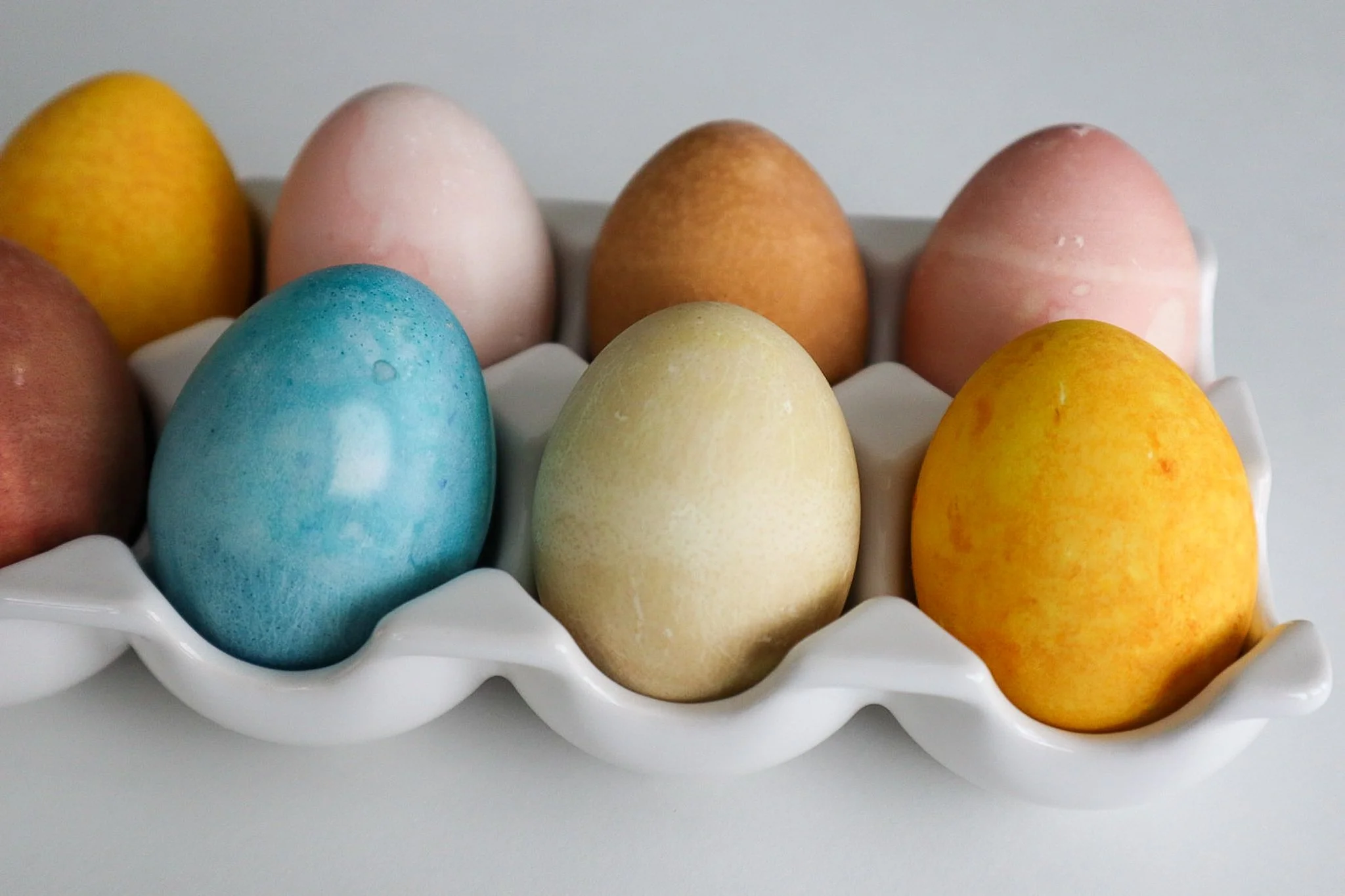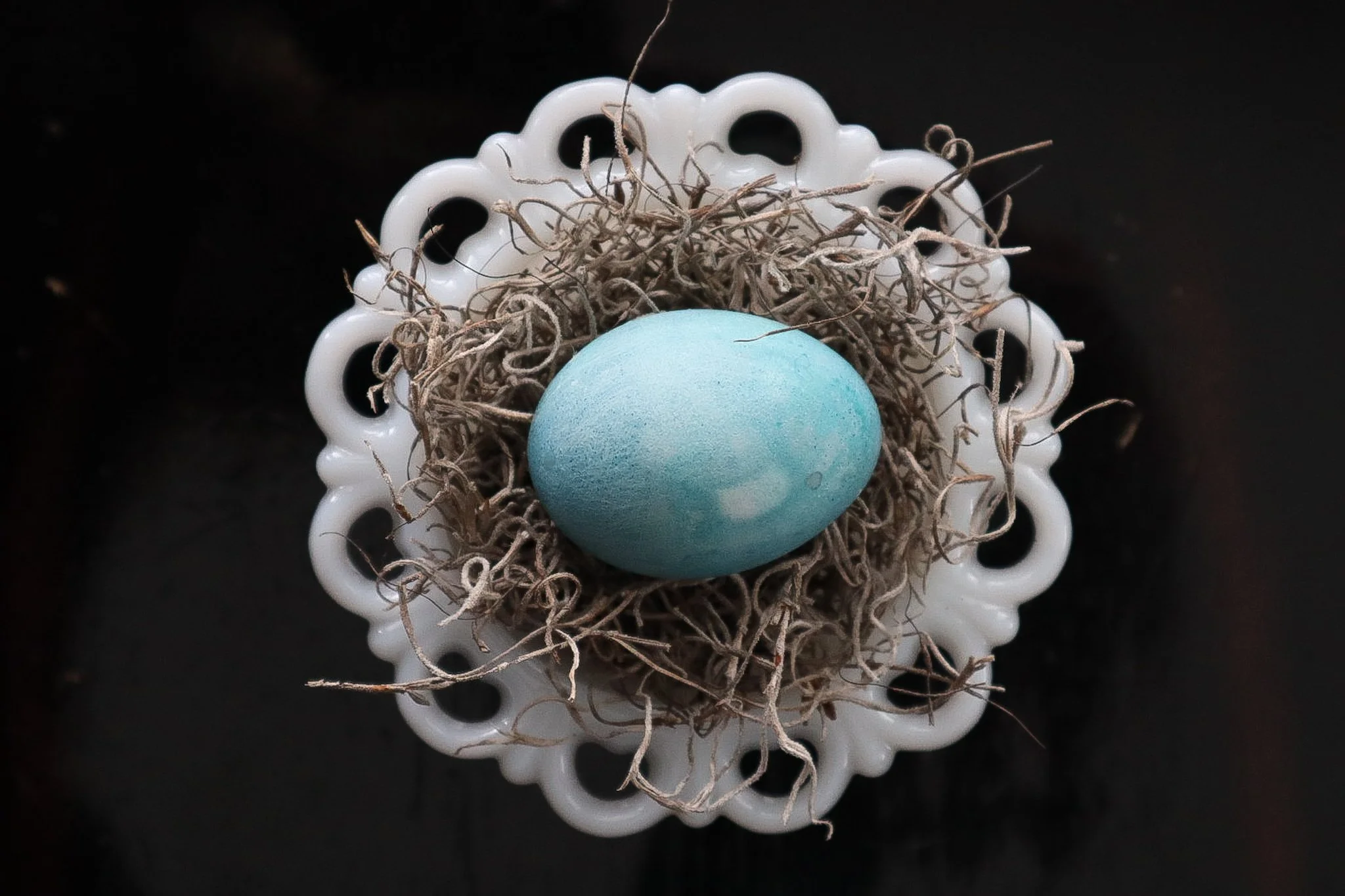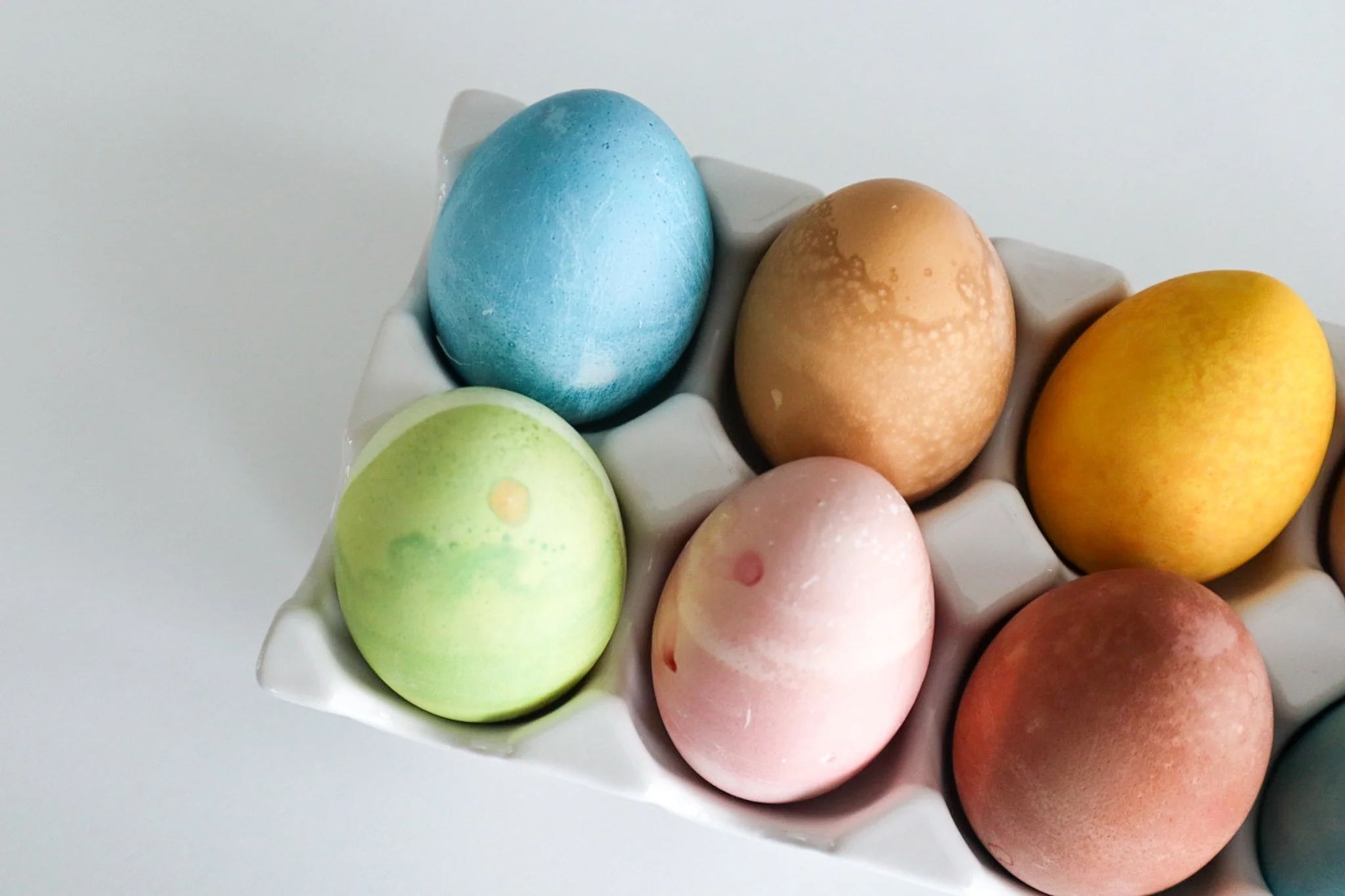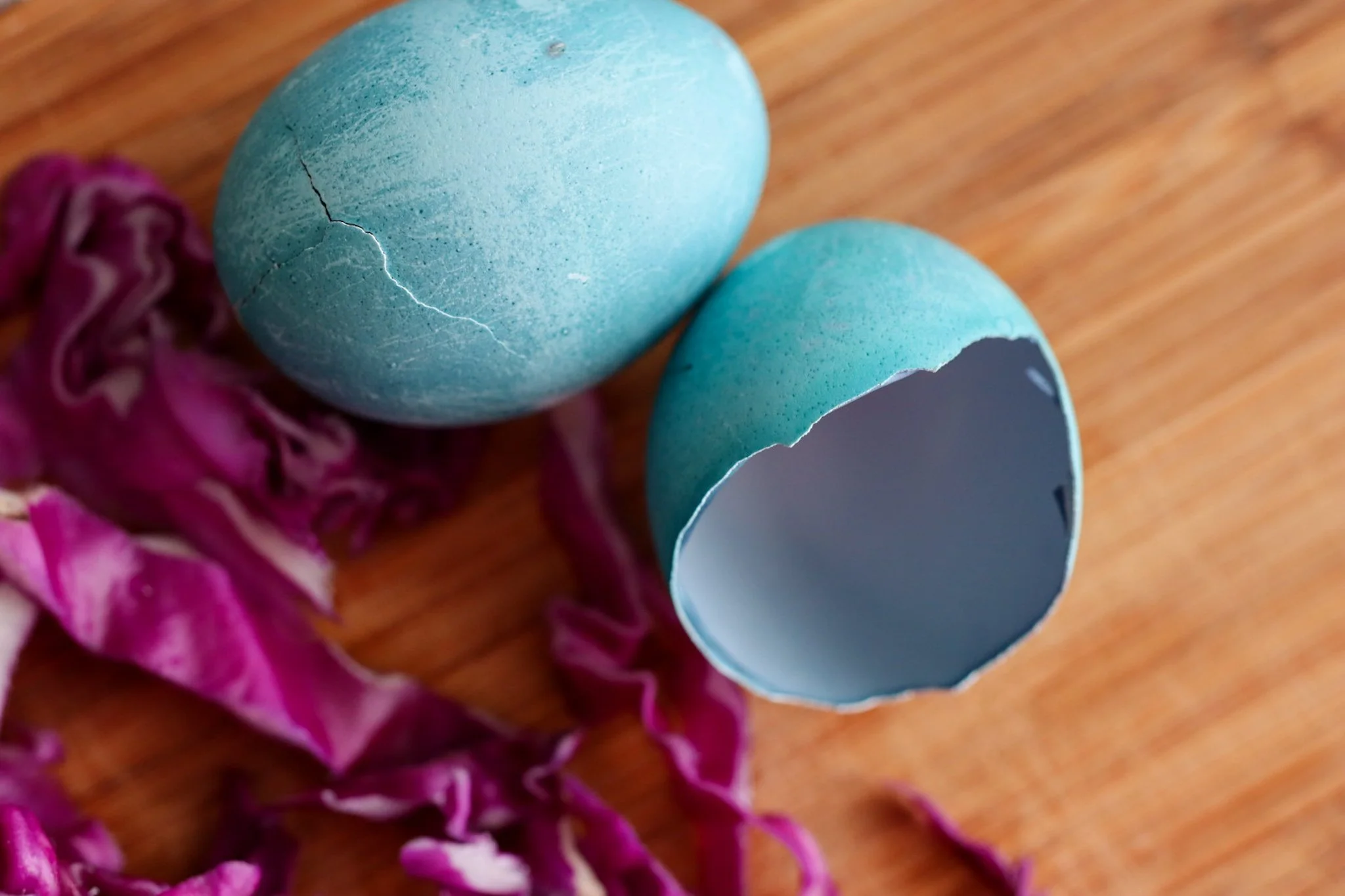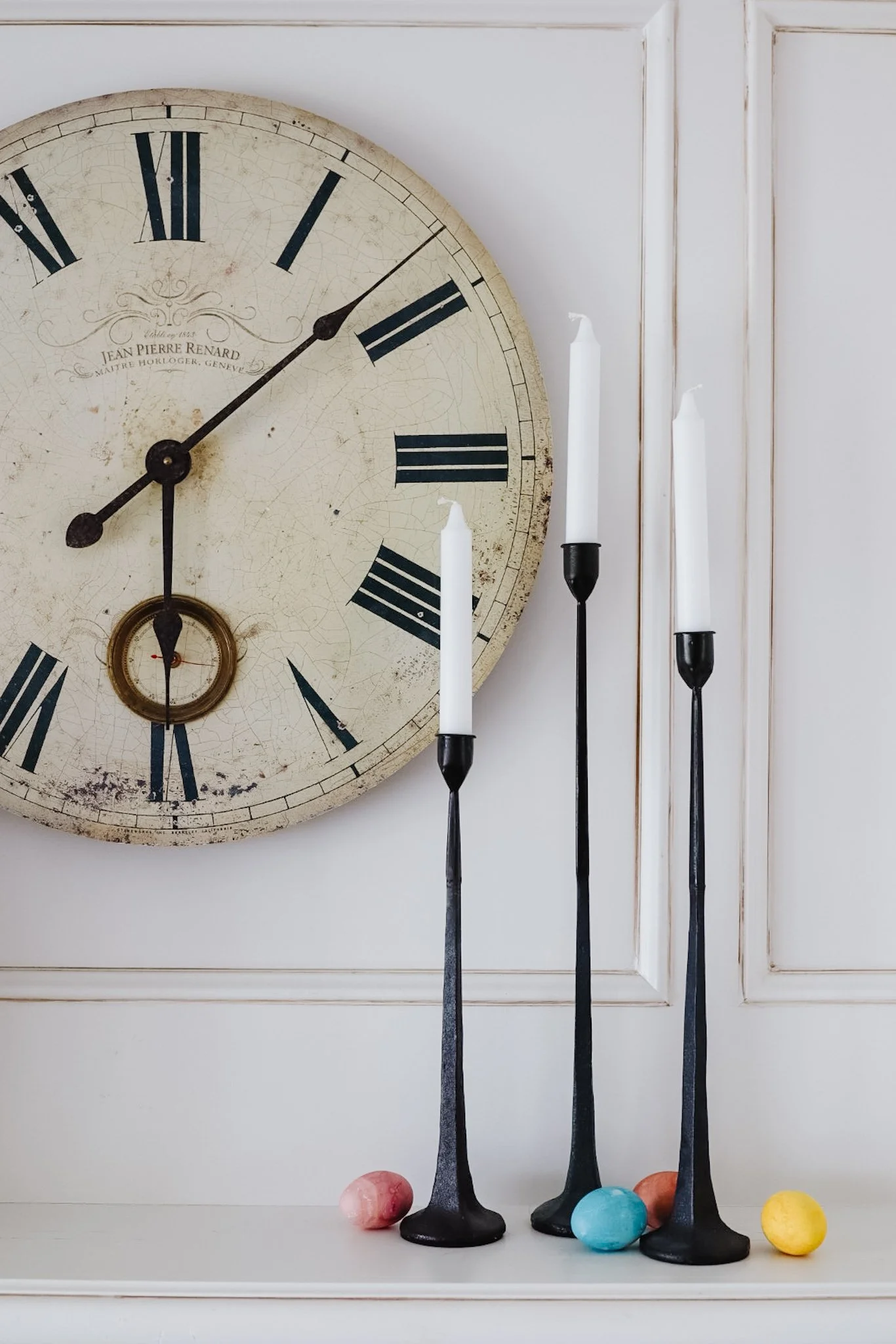Naturally Dyed Eggs
Make it
To naturally dye eggs, create liquid dyes made from items found in your kitchen. I start by collecting veggie scraps ahead of time by placing scraps in a gallon ziplock bag and placing it in the freezer. Then, when it is time to dye eggs, all the ingredients are ready to go.
Blue: 4 cups shredded purple cabbage
Yellow: 2 tablespoons of ground turmeric
Pink: 2 cans of strained beets (no boiling or water needed).
Red-Brown: 4 cups chopped beets
Brown: 4 tablespoons of ground coffee
Green: 6 cups of spinach
On the stovetop, boil the ingredient of choice in 4 cups of water for 20 minutes. Remove from heat and strain out vegetables or spices that were used. Stir in 2T vinegar to the liquid and let cool. Once cool, steep hard boiled eggs in each liquid dye for 5 min up to 24hrs depending on the color depth you wish to achieve.
Up close…
I wanted to give you an example of the beautiful colors that natural dyes create. Unlike store-bought dyes, natural dyes create a variety of textures and variations of colors. I even enjoy dying broken egg shells to make a more natural look in baskets and tablescapes around Easter time.
Believe it or not… it takes purple cabbage to create blue eggs! How cool is that?
Turmeric powder is a strong dye… it only takes 2 tablespoons of turmeric for eggs to turn an amazing textured yellow.
Pink Dye
Beet juice is used for pink dye. Unlike other dyes, this one requires no heat. Either soak fresh chopped beets in water until the color is reached or use canned beet juice (like I did). Dip eggs and tada! pink!
Style It
Styling Naturally Dyed Eggs
Not exactly rocket science… just scatter naturally dyed eggs here, there and everywhere! I decide to stick to styling the mantel but dyed eggs placed in a basket or tucked into a tablescape would be beautiful too.
Published Feature
Thank you to Johnson County City Lifestyle for the April 2022 feature.

